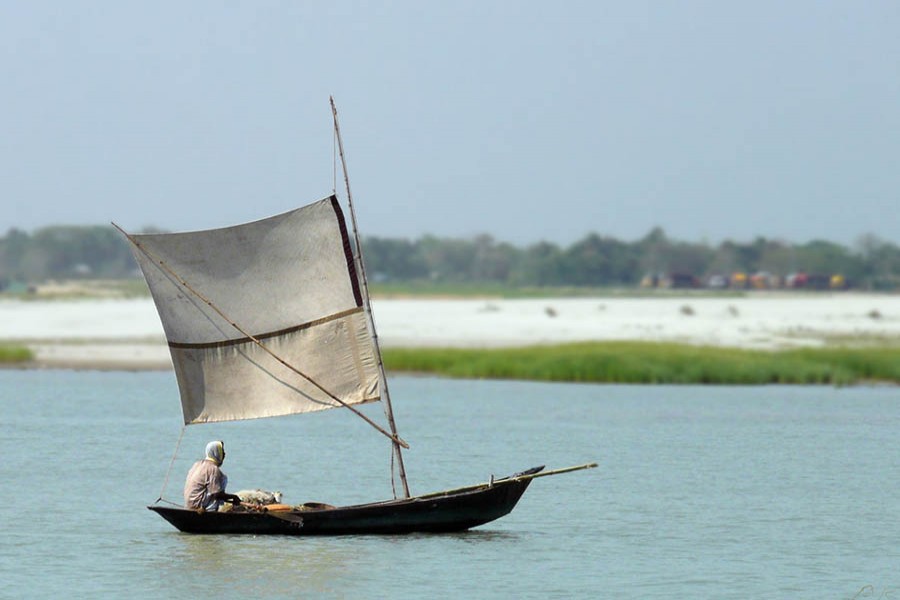Recent print media photographs of country-boats with colourful sails plying different river routes make many feel delighted. The panoramic spectacle reminds people of the times, when rivers in the country couldn't be thought of without country boats.
Big or small, all such boats in the land in those days would invariably be operated manually, by using either rows or paddles- and, of course, sails. Apparently not requiring muscle-power, in using the sails favorable wind is a primary requirement to keep the sails blown up. There is no dearth of high wind-speed during monsoon.
The makeshift engine boats and trawlers had yet to dominate the sector of river transport. But they couldn't be stopped. Eventually, they won for them an overwhelming place in the country's rivers. It drove hundreds of country-boat operators to leave their age-old profession. Many were compelled to switch over to occupations not remotely linked to boats or water.
The slow comeback of the sail boats could be the signs showing return of the glory days enjoyed by the now-jobless boatmen. Many passengers have opted for the mechanised boats due to their speed. The typically urban bustles and the need for urgent commuting have long crept into the country's rural areas. This very development has played a significant role in the fast drop in the demand for country boats. With the popularity of the mechanised boats increasing by the day, and their presence in the rivers becoming pervasive, the traditional boats eventually began discovering themselves in their death throes.
At one time these boats, especially those with sails, became a rare view. To the amazement of many, the busy river ports of the country were eventually seen without the presence of the massive country boats carrying loads of cargo. These majestic boats used to be occasionally found bedecked with multi-colour confetti. They would wear this festive look after the boat owners made profits in their respective businesses.
Today's younger generations can hardly think of the varieties of fanfare used to centre round boats. In fact, unique cultural practices and a secular ritual stemmed from this centuries-old waterway transport. Every region in Bengal could take pride in its typical folklores developed around boats.
Thus the greater Chattogram region stands apart from other boat cultures with their 'sampans'. Similarly, the greater Sylhet and Barishal regions can boast of their own lore formed around boats. Two most common rural festivities grown from country boats are those related to wedding and monsoon boa traces. The 'nayior', the temporary return of the bride to her parental house after the wedding, cannot be thought of without the specially decorated covered 'dinghis'. A similar spectacle is enacted to mark the groom's boat procession to the bride's village on the day of wedding.
Al though centredround riverside villages, these ceremonies used to cover a major part of the eastern Bengal, now Bangladesh. There are few areas in the sub-continent, the life and culture of which is so inextricably linked to rivers and boats. Seeing the boats being replaced by the air and water polluting engine boats, the elderly segments of the people grown along the riverbanks and amid boats can only become nostalgic. The return of the country boats has apparently been prompted by the soaring expenditure in the maintenance of mechanised boats. Ironically, it was the general village folks who primarily welcomed the engine boats, turning away from the traditional ones. Like in the cities, the village dwellers are now found always in a hurry. The languidly moving sail boats would not meet their need for speed in life. However, good news is there are still many people willing to see the boats survive the fads of time. The frenzied love for speed leads to disasters on many an occasion.


